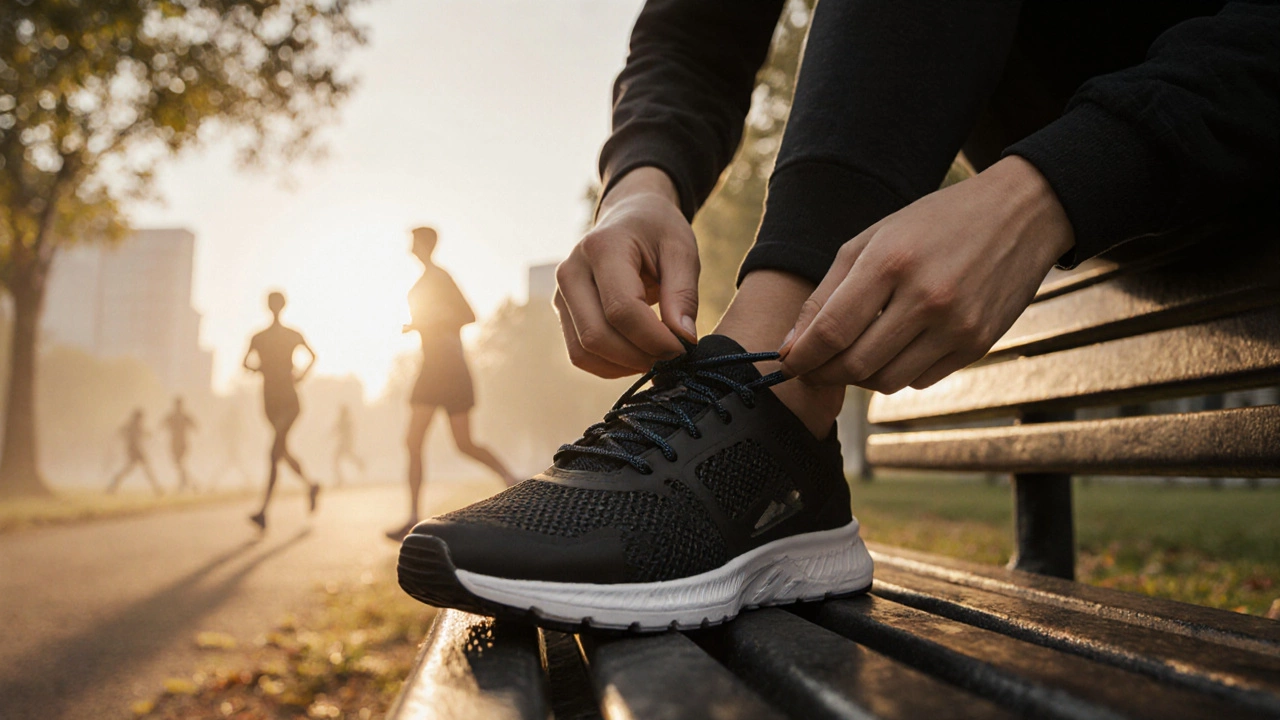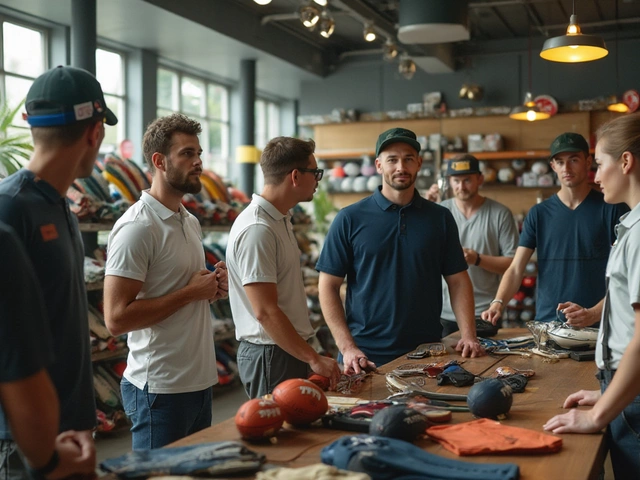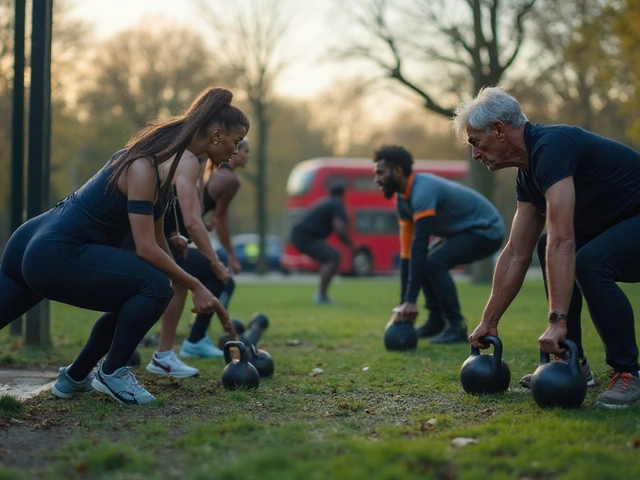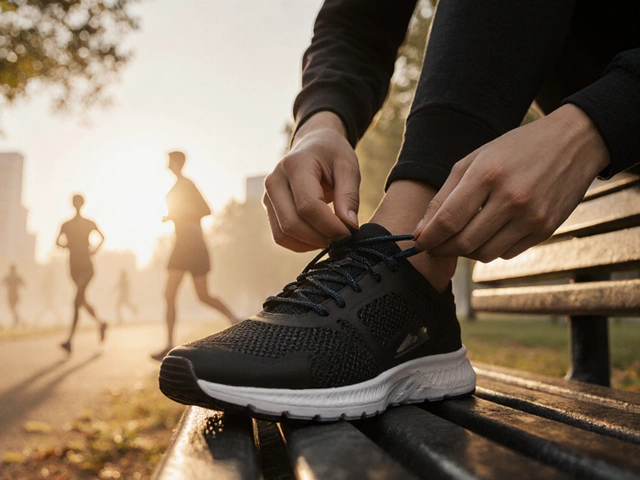Ever wondered if the shoes you wear for a casual jog or a weekend meetup count as sneakers sportswear? The line between fashion and function can get blurry, especially when brands blur the categories on purpose. This article untangles the question by defining the key terms, tracing their history, and giving you a practical checklist for deciding when sneakers belong in your sportswear lineup.
What Exactly Are Sneakers?
Sneakers are low‑top shoes with a flexible rubber sole, originally designed for athletic activities and later adopted as everyday fashion. They combine comfort, lightweight construction, and a wide range of aesthetic styles. The term “sneaker” started in the late‑19th century when rubber soles allowed the wearer to move silently-hence the name.
Understanding Sportswear
Sportswear refers to clothing and accessories specifically engineered to support athletic performance. It includes apparel, footwear, and gear that enhance movement, manage sweat, and protect the body. While sportswear is a broad umbrella, footwear is a core component because the right shoe can prevent injury and improve efficiency.
From Track to Street: The Evolution of Sneakers
The first sneakers were simple canvas uppers with a rubber sole, marketed to runners and tennis players. By the 1970s, brands like Nike and Adidas introduced cushioning technologies (e.g., Nike’s “Air” and Adidas’s “Boost”) that turned sneakers into high‑performance gear.
In the 1990s, the rise of hip‑hop culture and basketball legends such as Michael Jordan turned sneakers into status symbols, spawning the “lifestyle” sub‑category that focuses more on style than sport‑specific performance.
Key Design Features That Define Sneakers
- Cushioning technology: Air units, foam midsoles, and gel inserts absorb impact and reduce stress on joints.
- Breathability: Mesh panels and engineered knit uppers keep feet cool during intense activity.
- Outsole pattern: Rubber grips provide traction on pavement but may lack the specialized traction needed for indoor courts or trails.
- Weight: Lightweight construction speeds up foot turnover for runners and improves agility for court sports.
Categories Within Sneakers
Not every sneaker is built the same. Here are the most common sub‑types:
- Running shoes are engineered for forward motion, featuring extra cushioning and a heel‑to‑toe drop that promotes efficient stride.
- Basketball shoes prioritize ankle support, lateral stability, and a slightly higher cut to protect the joint during quick cuts.
- Lifestyle sneakers emphasize style, often borrowing technology from performance models but tuned for everyday wear.
- Training shoes (or cross‑trainers) offer a balanced mix of cushioning, lateral support, and a flat sole suitable for gym routines, HIIT, and light court work.
What Does Sportswear Footwear Include?
Sportswear shoes aren’t limited to sneakers. The category also covers:
- Cleats for soccer, rugby, and American football - rigid studs provide grip on grass or turf.
- Trail shoes - aggressive lugs and waterproof uppers for off‑road conditions.
- Specialized indoor shoes - non‑marking soles for basketball courts, volleyball gyms, and racquet sports.
All of these share the same goal: optimize performance for a specific activity.
Comparison: Sneakers vs. Other Sportswear Footwear
| Feature | Sneakers (General) | Running Shoes | Basketball Shoes | Cleats |
|---|---|---|---|---|
| Primary Use | Casual & light‑activity | Long‑distance running | Indoor/outdoor basketball | Field sports (soccer, rugby) |
| Traction System | Flat rubber tread | Stretch‑mesh with cushioned outsole | Herringbone or circular pattern | Metal/soft studs |
| Ankle Support | Low‑cut, minimal | Low‑cut or mid‑cut | Mid‑cut/high‑cut | Depends on model |
| Cushioning | Standard foam | High‑impact foam/air units | Responsive foam, forefoot boost | Minimal |
| Weight (grams per shoe) | 250‑300 | 200‑250 | 260‑310 | 300‑350 |
Are Sneakers Considered Sportswear?
The short answer: yes, but with qualifiers. Sneakers belong to the sportswear family because they were created for athletic activity and share many performance‑focused technologies. However, many everyday sneakers are designed more for fashion and casual comfort than for optimizing a specific sport.
When you evaluate a pair of sneakers, ask yourself these three questions:
- What activity am I mainly using them for?
- Do they provide the specific support (cushioning, stability, traction) that sport demands?
- Will using them regularly for that sport increase injury risk compared to sport‑specific shoes?
If the answer is “yes” for a given activity, then those sneakers effectively function as sportswear. If not, you might be better off with a specialized shoe.
Real‑World Examples: When Sneakers Work - and When They Don’t
Nike Air Zoom Pegasus is a versatile running shoe that many athletes also use for light gym work because its responsive cushioning and breathable knit can handle both treadmill miles and short weight‑lifting sessions.
Adidas Ultraboost delivers plush cushioning for long runs, but its higher stack height can feel unstable during quick lateral movements required in basketball.
For high‑impact sports like basketball or indoor volleyball, a dedicated basketball shoe with ankle support and a rubber outsole designed for court traction will usually outperform a lifestyle sneaker.
Checklist: Picking the Right Pair for Your Activity
- Identify the primary sport or activity.
- Look for sport‑specific features (e.g., heel‑to‑toe drop for running, lateral support for court sports).
- Check the outsole pattern - smooth rubber for indoor courts, herringbone for outdoor trails.
- Consider foot anatomy: arch type, pronation, and any previous injuries.
- Test fit: there should be a thumb’s width of space at the toe box.
- Read reviews from athletes who use the shoe for the same sport.
Common Misconceptions
1. “All sneakers are the same.” - Not true. Technology varies dramatically across sub‑categories.
2. “If a sneaker looks cool, it’s good for training.” - Aesthetic appeal doesn’t guarantee performance.
3. “You can wear one pair for every sport.” - Using the wrong shoe can increase the risk of ankle sprains, shin splints, or plantar fasciitis.
Conclusion: Make an Informed Choice
Sneakers originated as athletic footwear, so they sit comfortably inside the broader sportswear umbrella. Yet, the modern market offers highly specialized shoes that outperform generic sneakers in specific contexts. By matching the shoe’s design features to your activity’s demands, you’ll protect your feet, boost performance, and still enjoy the style you love.
Are running shoes considered sneakers?
Running shoes are a sub‑type of sneakers. They share the low‑cut silhouette and rubber sole but are engineered with extra cushioning, a higher heel‑to‑toe drop, and breathable uppers to support repeated forward motion.
Can I use basketball sneakers for treadmill running?
You can, but it’s not optimal. Basketball shoes provide lateral support and a slightly higher stack height, which can feel heavier on a treadmill. For regular running, a dedicated running shoe offers better shock absorption and a more efficient stride.
What’s the difference between lifestyle sneakers and performance sneakers?
Lifestyle sneakers prioritize design, colorways, and brand collaboration, often borrowing technology from performance models but not fully optimizing it. Performance sneakers (running, training, basketball) focus on specific biomechanical needs such as cushioning, stability, or traction.
Do I need special shoes for indoor gym workouts?
Cross‑training shoes are ideal because they provide a flat, stable sole for weightlifting, while still offering enough cushioning for short runs or box jumps. Using a heavy running shoe can limit stability, and a high‑cut basketball shoe may restrict ankle mobility during squats.
How can I tell if my sneakers are still good for sports?
Check the outsole wear pattern, compression of midsoles, and any loss of ankle support. If the tread is smooth, the midsole feels soft, or you notice foot fatigue during workouts, it’s time for a replacement.






